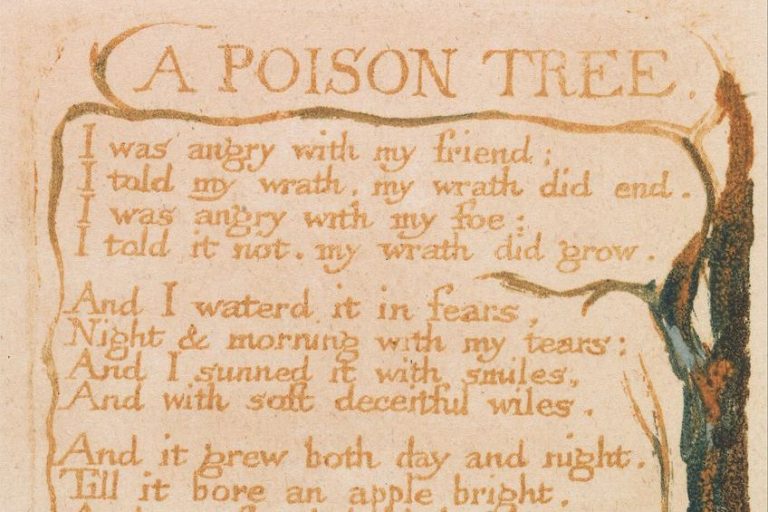Dada Poetry – Dive Into the World of Absurd Poetry
The Dada movement and Dada poetry have been immensely influential for many different artistic movements over the near-century since the movement dissolved. In this article, we will examine some of the history behind the Dada movement, the techniques used by the Dada poets, and several other aspects of this influential artistic and literary movement. So, let’s have a look at Dada poetry and see what we can learn!
Table of Contents
A Look at Dada Poetry
Artistic periods arise from somewhere. They are usually some kind of a response to previous forms of art and often serve as a critique of some kind of those earlier forms, and the Dada movement is one of those movements. The movement in general started around 1916 and quickly spread to various countries, and it originated as a reaction against the First World War. That particular war was the first truly modern war, and it led to horrors the likes of which had never been seen before.
As the war started and eventually came to an end, the Dada movement continued and eventually reached its height and eventually started to wane by the mid-1920s.
The general idea behind the Dada movement was to critique aspects of art that had become commonplace during the modern era, such as logic and reason. This new form was instead focused on an expression of the irrational, anti-bourgeois sentiment, and an embracing of nonsense.

While the Dada movement did come to an end, prominent Dada poets and artists would continue into other avenues and eventually inspired various other artistic movements. For instance, there is considerable Dada influence in surrealism, pop art, postmodernism, punk art, and various other forms and movements. It has remained influential to this day, and while Dada was about a number of different art forms, we will focus on Dada poetry today.
Historical Background and Influence of Dada Poetry
Dada poetry and the movement in general saw its origins in Zürich, Switzerland during the First World War in 1916. Many of the artists who would become early members of the Dadaist movement were refugees from other countries that had been affected by the war.
These Dada poets and artists gathered in a nightclub in the city called Cabaret Voltaire which was founded by some of the most integral members of the Dada movement, Hugo Ball and Emmy Hennings.
This nightclub was a place to perform a variety of experimental pieces, such as poetry, theater, and music. It was also in this location where the name for the term originated, and it was called “Dada” as a means of deliberately evoking a more nonsense term that did not have a definite or etymological meaning that could be traced. The name itself was part of the cultural critique that was the Dada movement in general. It was also here where the first journal dedicated to the movement, simply titled Dada, was first published.
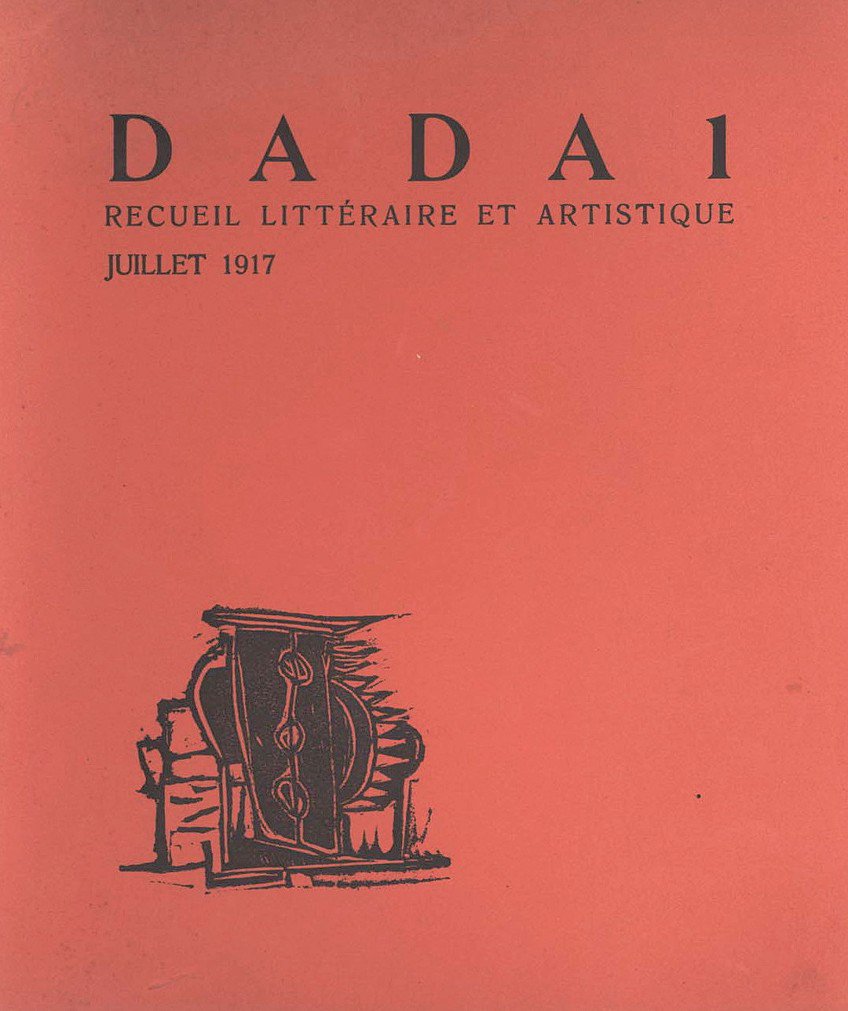
Many of the earliest Dada poets and writers would have their start in this location, and many of those influential figures will be discussed in more detail below. However, after the origins of this movement, it started to spread to other countries and locations, such as Berlin, Paris, and New York City. Each of these locations was distinct in their application of ideas, but they were all generally unified in a more protest-oriented mentality, a desire for experimentation, and a general move towards an anti-art mentality.
The movement would reach its height in the early 1920s, but it started to weaken as the decade continued on. Dada poetry and other art forms may have been immensely transgressive when they were first developed, but the movement started to see mainstream acceptance and lost some of its experimental and shocking edge.
Many members of the Dada movement went on to work in other areas and continued to be influential, such as in the founding of other art movements like surrealism. However, even though the Dada movement came to an end, Dada poetry and art would go on to have a massive impact throughout the 20th century. Numerous artists were inspired by the Dadaists and went on to considerable success in their own avenues. Even more contemporary forms of art, such as digital poetry and spoken word, which came far later, can trace some of their origins to Dada poetry and art.
Characteristics of Dada Poetry
Dada poetry is a fascinating thing because of what it attempted to do. It wanted to criticize art and poetry itself. It wanted to break down what we had always assumed to be poetic and artistic and to force us to question what it was that we were truly looking at when we examined art. The Dada movement played with many different characteristics, and so, let’s have a look at those different characteristics.
Absurdity and Irrationality
Dada poetry is known for being a complete embrace of the absurd and the irrational. This poetry was an attempt to reject all the aspects of the world that had led to a horrific event such as the First World War. This led the Dada poets to reject the idea of logic, reason, and rationality. They wanted to examine the irrational, the absurd, the nonsense, the contradictory, and the paradoxical.
They would make use of randomized methods and collage to disrupt the way that we ordinarily see art and poetry.
Collage and Assemblage Techniques
Some of the most common techniques of Dada poetry, which would become some of the easiest ways to recognize this particular artistic medium, was through the use of collage. They would combine different elements from disparate sources together to create something new.
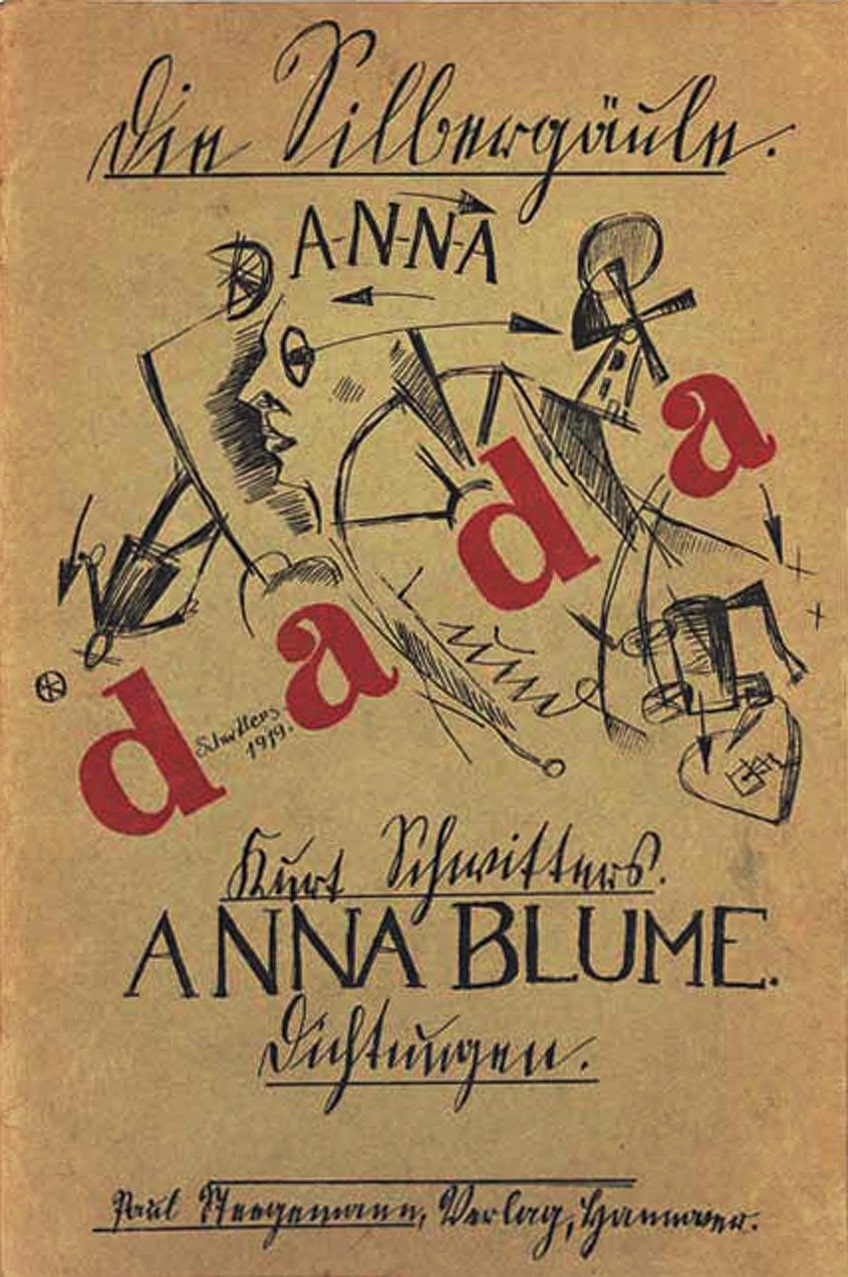
For instance, a Dada poet might take a newspaper or a magazine and cut it up into pieces and then assemble the pieces back together into something wholly new and entirely random. They allowed them to play with and distort language to suit their whims and desires.
Wordplay and Linguistic Experimentation
Dada poetry is notable for featuring an attempt at altering the way that we see language. It involved the use of new and nonsensical words and expressions, a complete breakdown of the supposedly correct way to use grammar and spelling, and it would feature elaborate and variable typography, such as arranging a poem to look like something else.
Another common feature of this was to use those nonsensical expressions to create musical sounds that, while lacking in technical meaning, were pleasant to hear.
Subversion of Traditional Forms and Conventions
One of the main philosophical thrusts behind the Dada movement in general was that it was a rejection of traditional norms in poetry and art. It was an attempt to reject and attack what had come before, and so Dada poetry made use of unusual rhyme, meter, structure, and so on.
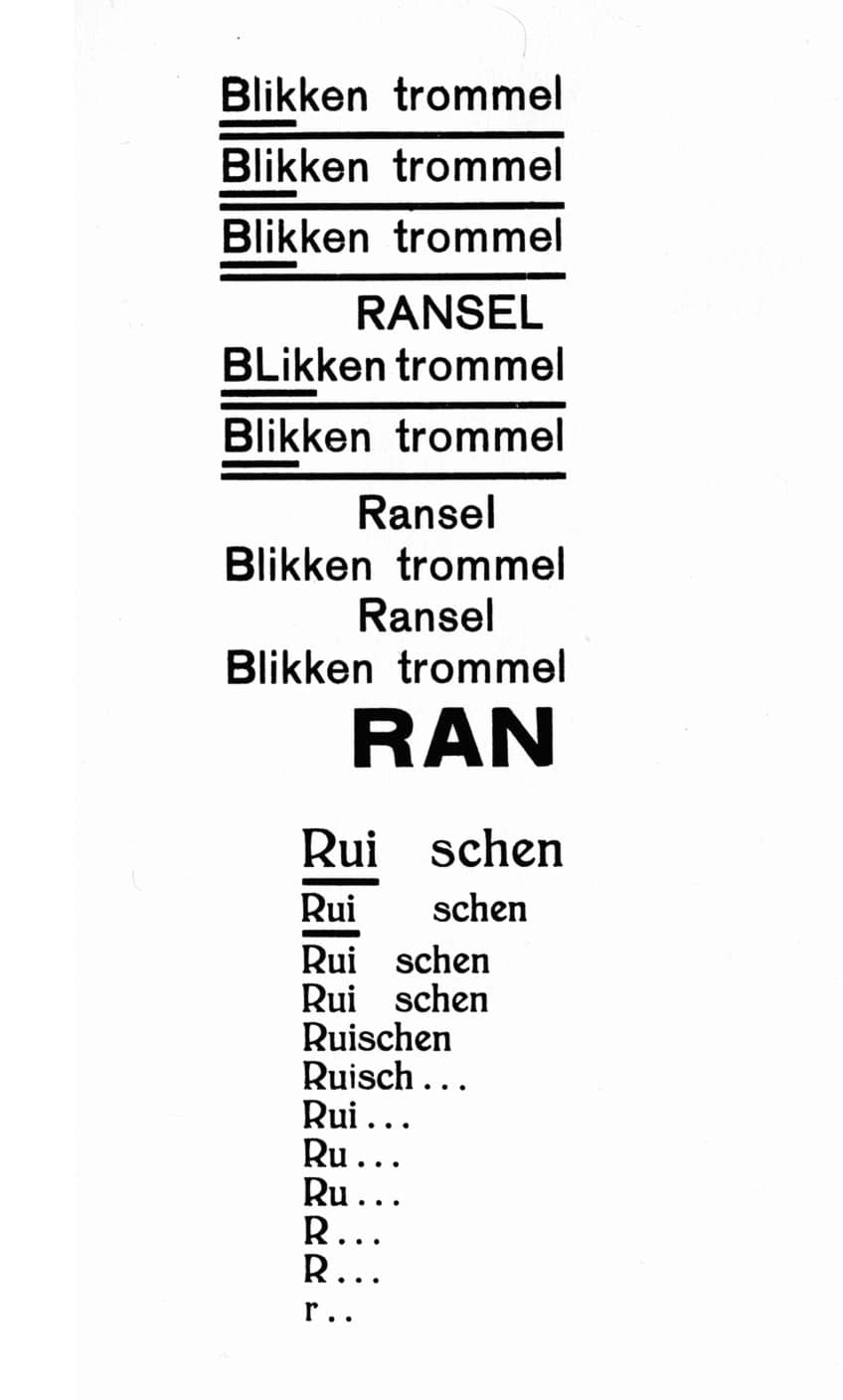
It was not an attempt to create poetry on par with what had come before, and it was instead a way to critique the very values that had led to the way that art and poetry had always been perceived. It was meant to be something new, something against tradition, and there were a number of important figures in Dada poetry that made that happen.
Key Figures of Dada Poetry
There were a number of figures who were immensely important to the development of Dada poetry and the movement in general, and each of them is worth discussing in some level of detail. We will examine only five of these figures below.
- Hugo Ball (1886 – 1927) was a German poet. He is often considered to be the founder of the Dada movement in general. One of his greatest contributions is that he was a pioneer in sound poetry, which involves the use of nonsense words and phrases to create a musical quality.
- Walter Serner (1889 – 1942) was a German writer. He is best known for writing Letzte Lockerung, which is a manifesto and integral founding document of the Dada movement as a whole. He became an important artistic figure and editor in the movement and beyond.
- Max Ernest (1891 – 1976) was a German-American artist and poet. He was an immensely prolific figure and an important figure in both Dadaism poetry and surrealism. Some of his most important artistic innovations included the development of frottage and grattage.
- Tristan Tzara (1896 – 1963) was a Romanian poet and performance artist. He would later go on to become a critic, film director, and composer. He was considered to be one of the leaders of the Dada movement and he would go on to be considered an important figure for creating a connection between Cubism and Futurism.
- Louis Aragon (1897 – 1982) was a French poet. This figure in Dadaism poetry would become a later important founding member of the surrealist movement. While he had been a part of Dadaism, it was his later work that would bring him his fame.
This has been a brief list of some of the most important and influential figures in the development of Dada poetry and art, and the movements that would follow in its wake. However, there were many others who also played a prominent role in this movement and would go on to create fascinating pieces of poetry and art during and after the Dada movement.

Techniques and Approaches in Dada Poetry
There are many different methods and ideas that were explored by the Dada poets, but we will only examine a handful of them today. It is worth remembering that Dada poetry, in general, was about a rejection of what had been considered ordinary and commonplace in art and culture, and so the techniques that were adopted by poets in Dadaist poems should be expected to follow along similar lines. So, let’s see some of the techniques that were used in Dada poetry.
Cut-Up Method
The cut-up method is a rather fascinating collage-style technique for poetic composition that involves the cutting up of existing texts, such as from newspapers or other sources, so that they can be rearranged into something new.
The poems were often arranged randomly to create new and unexpected meanings and ideas, and they were often intended to serve as a means of disrupting the ordinary linear logic of language to force a new way of reading poetry.
Automatic Writing
Automatic writing is a fascinating technique that involves the use of a non-conscious means of writing. The idea is that someone will write without accessing their conscious thoughts, such as through the use of mediums such as Ouija boards or, especially in later periods, through the use of hallucinogenic drugs. This means of writing was supposedly a method of accessing the subconscious or even for channeling spiritual aspects of oneself.

Found Poetry
Found poetry is similar to cut-up poetry, but instead of arranging through non-linear collage, found poetry involves the use of existing words and phrases from other sources and then reframing those lexical aspects by altering the order, punctuation, and so on.
This is often used as a means of altering something non-artistic, such as a letter or advert, and transforming it into a poem.
Chance Operations
Chance operations is a chance-based technique that involves the use of randomization to assign words, phrases, and so on to a text. This randomization is generally attained through the use of methods such as dice, coins, and cards. This means that Dada poetry could be created with an unpredictable element that is beyond the control and intention of the poet in question.
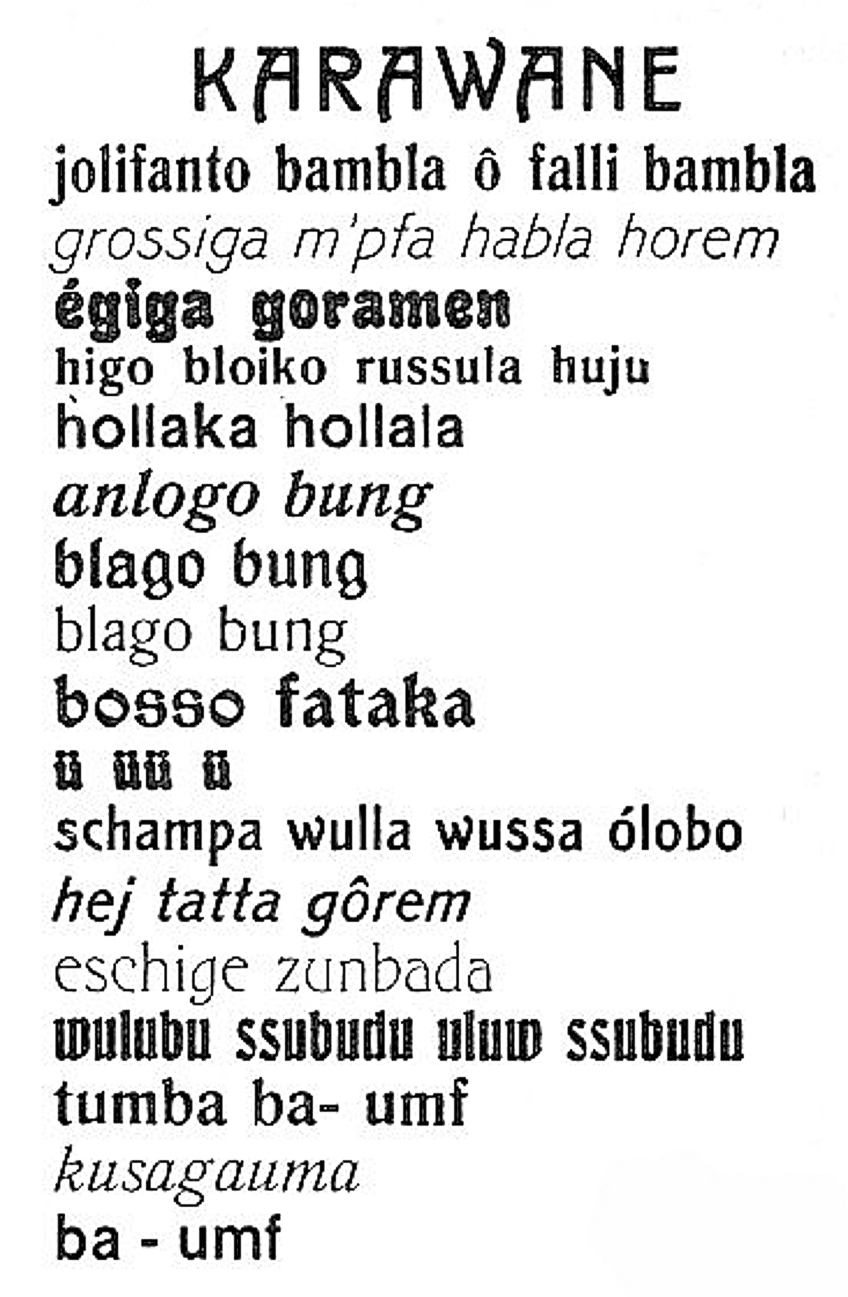
Themes and Subject Matter in Dada Poetry
There are many different themes that were explored in Dada poetry, but we will only examine a few of the most common themes below. It should always be remembered that the Dada movement as a whole was a means of societal and artistic critique, and so those elements will carry over into the themes that are explored by Dada poems.
Critique of Society and Politics
A common theme that is explored throughout much of Dada poetry was a general critique of society and politics. The movement originated during the First World War, which was the first truly modern war and a horrific event for everyone involved.
And so, the Dada poets who had been affected by this terrible conflict took aim against it.
They challenged the supposed authority of the institutions around them, they used humor and satire to mock what was supposedly correct in society, and they rejected the modernized ideas and notions that had led to the war in the first place.
Exploration of the Unconscious
A major influence on Dada poetry was the psychoanalytic work of Sigmund Freud. One of his largest contributions to the understanding of the human psyche was the idea that unconscious desires and impulses were a driving force behind much of what humans did when conscious. And so, the Dada poets would often seek to understand and interpret the unconscious.

They would use methods such as automatic writing and dream interpretation to try and understand the unconscious of the human mind. This would often involve the exploration of symbols, metaphors, fantasies, and fears.
Embracing Randomness and Chaos
The Dada poets were inspired by the idea of a complete lack of control. The universe is ultimately a chaotic place in which anything could happen at any moment, and so the Dadaists would often play with this idea. They would use chance systems, such as through the use of dice or cards, to determine poetic sequences for them. In addition to this, they would improvise and use spontaneous action in what they created and developed.
They wanted to embrace the randomness of existence and to go against the ideas of logic, reason, and predictability that had become a major component of the modern era.
Disruption of Language and Meaning
Language is a complicated thing, and many different people have a variety of ideas about what is correct or incorrect language usage, but the Dada poets saw language as an unreliable means of understanding the world in which we live. And this led to their use of nonsense words, paradoxical expressions, the breakdown of prescriptive grammar, and much more.

This general distrust of language and its viability as a means of truly communicating the way that we think and feel is actually a long-standing idea, and it can be seen in the work of many 20th-century philosophers and linguists. The Dada poets understood that earlier than many others.
Dada Poetry in Contemporary Art
Dada poetry may have technically come to an end, as the movement ended in the mid-1920s, but its influence would continue throughout the 20th century and would influence a variety of other figures. For instance, composers like John Cage would go on to play with silence and noise in their work, artists like Barbara Kruger would use collage and slogans as cultural critiques, and poets like Christian Bök would use algorithms in his poetry.
The Dada movement’s influence cannot be understated and in contemporary poetry, it has led to considerable innovations in areas such as the use of collage and parody, a challenge of conventional styles of poetry and art, the use of multilingualism and translation, and metatextual works meant to question the very notion of art itself.
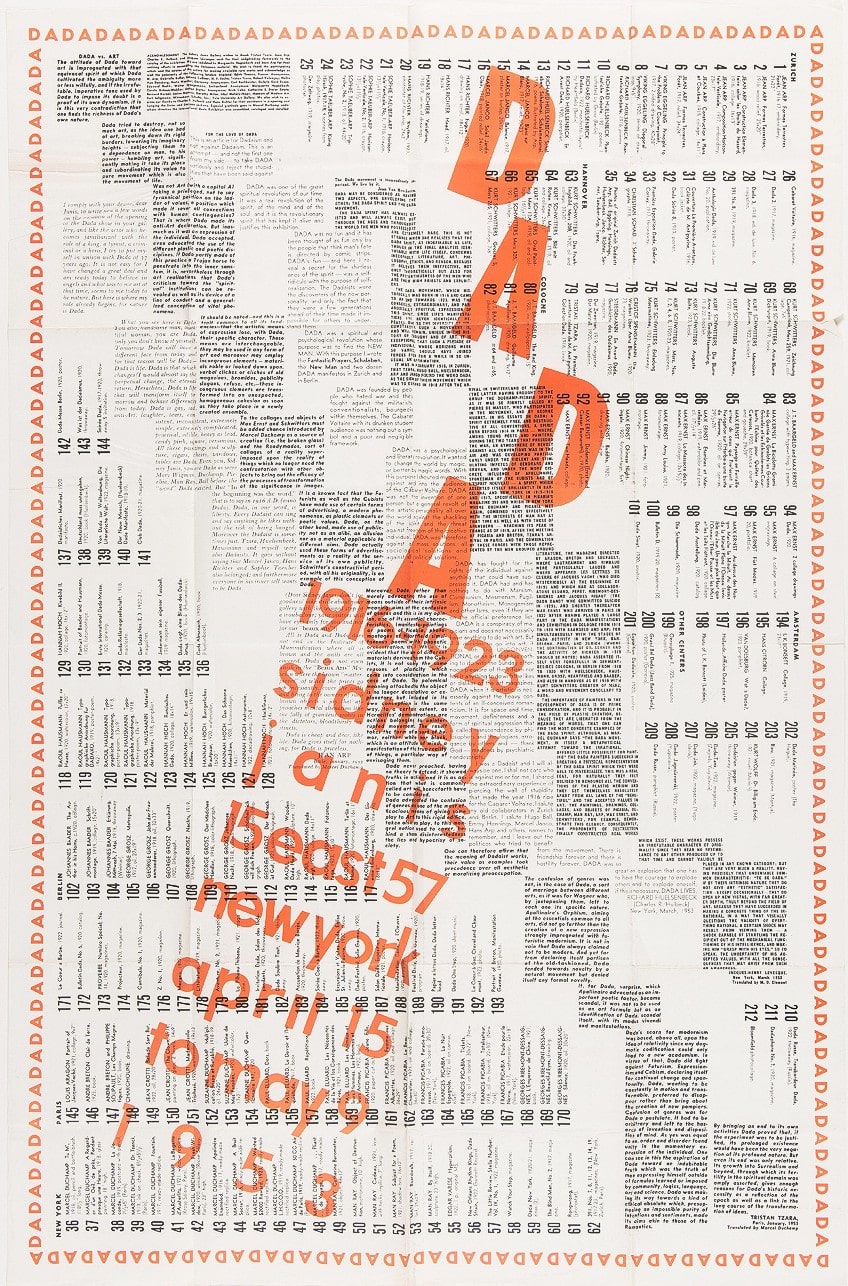
As an anti-art movement, Dada poetry has often been a form that has critiqued poetry and artistry itself and attempted to comment on the ways in which we approach art in general. Some prominent figures in the contemporary era who have made use of some of the above-mentioned methods include poets such as Charles Bernstein, Caroline Bergvall, and Kenneth Goldsmith. However, there are many other poets and artists throughout the world who have been inspired by the work of the Dada poets to create something that critiques both the world around us and the art that we consume.
And so, we come to the end of this look at Dada poetry. We have examined the history of the Dada movement, some of the techniques of the movement, a number of prominent Dada poets, and the influence that Dada poems and those associated with them have had on contemporary poetry and art. There is no shortage of writers in the world today who were inspired by the Dada movement, and many of their works are also worth exploring.

Frequently Asked Questions
What Was the Dada Movement?
The Dada movement was an artistic and literary movement that was focused on a general rejection of traditional values with regard to art and culture. It was about embracing and experimenting with the irrational, illogical, and chaotic. Even the name of the movement itself was meant to have no actual meaning and was meant to be a randomly chosen term that reflected the irreverent nature of the movement in general.
What Is Dadaism Poetry?
This is any poetry that, in some way, follows the traditions that had been laid down by the Dada movement. Some of the most famous aspects of Dadaist poems include the use of humor, nonsense, a flair for the creative, and even the use of chance within poetry, such as by using dice rolls to determine aspects of a poem. However, Dada poem examples have gone on to have considerable influence on other movements and styles, and elements taken from this movement can be found in places that have no present connection to Dada poetry.
Who Are the Most Famous Dada Poets?
Some of the most famous Dada poets include figures such as Hugo Ball (1886 – 1927), Walter Serner (1889 – 1942), Max Ernst (1891 – 1976), Tristan Tzara (1896 – 1963), and Louis Aragon (1897 – 1982). However, there have been numerous other figures that operated during the Dada movement that went on to considerable fame either during the movement or in the many movements that followed on from it, such as Surrealism.
What Are the Most Famous Dada Poems?
Some of the most famous Dada poem examples include Karawane (1916) by Hugo Ball, which makes use of extensive nonsense terms, How to Make a Dadaist Poem (1920) by Tristan Tzara, which is an actual instruction manual on writing Dadaist poems, and the Feu de joie (1920) collection by Louis Aragon, which is a collection that was focused on the absurd. There are many other famous pieces of Dada poetry that are worth examining, but these are some of the most famous of them all.
Why Did the Dada Movement End?
There is no definitive reason as to why the Dada movement came to an end, but it did effectively come to an end by the mid-1920s. However, it may not have necessarily entirely disappeared, as it instead morphed into a number of different movements and styles and continued. The reason the Dada movement itself came to an end, though, was because of a combination of the changing artistic landscape after World War One, internal conflicts between Dadaist figures, and general acceptance by the mainstream.
Justin van Huyssteen is a freelance writer, novelist, and academic originally from Cape Town, South Africa. At present, he has a bachelor’s degree in English and literary theory and an honor’s degree in literary theory. He is currently working towards his master’s degree in literary theory with a focus on animal studies, critical theory, and semiotics within literature. As a novelist and freelancer, he often writes under the pen name L.C. Lupus.
Justin’s preferred literary movements include modern and postmodern literature with literary fiction and genre fiction like sci-fi, post-apocalyptic, and horror being of particular interest. His academia extends to his interest in prose and narratology. He enjoys analyzing a variety of mediums through a literary lens, such as graphic novels, film, and video games.
Justin is working for artincontext.org as an author and content writer since 2022. He is responsible for all blog posts about architecture, literature and poetry.
Learn more about Justin van Huyssteen and the Art in Context Team.
Cite this Article
Justin, van Huyssteen, “Dada Poetry – Dive Into the World of Absurd Poetry.” Art in Context. October 3, 2023. URL: https://artincontext.org/dada-poetry/





